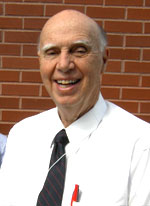Universal Time Confirmation Using the Unique Aspects of Relative Motion in Galileo?s 400 Year-old Observations
Year: 2007
This paper describes important but overlooked results that are seen when Galileo?s views from a ship or land are coupled with
uniqueness of start and stop times of a falling object. The same resulting elapsed time of travel of that object would be seen by all observers.
But, observers moving relative to that unique environment see measurably-different path lengths and velocities along those
various path lengths. Next in this paper, those same results are shown to hold for a light beam in rectilinear motion. And an added
assurance of uniqueness of elapsed time of travel is found. Since constancy of the unique elapsed times theoretically should be experienced
anywhere in our universe, this seems to confirm universal time, defined here as ?that time which passes at the same rate everywhere
in the universe?[1]. That kind of universal time in our visible universe is confirmed daily by astronomers and NASA mission controllers
in accurately predicting motions and positions of objects in space. For a single light beam originating in a unique environment (as further clarified herein), we would expect constant elapsed times between light travel between waves (constant periodicity and constant
frequency) regardless of the relative velocity of observers. The non-primed values are unique
for any single specific light source and primed values are those actually measurable by moving observers. Some numerical examples
are included for visible light wave lengths. It is conceivable that this relationship holds throughout the entire spectrum of energy emissions,
not just for visible light. But of course all of this needs to be confirmed experimentally. If it happens to be verified experimentally,
it would certainly have a significant impact on our future understanding of light itself, as discussed briefly in a second paper [2]
by this author, as well as impacting many other areas of optical physics and astronomy.
[ 1 ]
This definition and use of ?Universal Time? is analogous to that proposed by P. Moon, D. E. Spencer and E. E. Moon in ?On the Establishment of
Universal Time?, in Philosophy of Science? , Vol. 23, p,. 219 (1956).
[ 2 ] Munch, N. E., ?The Possible Nature of Light Emissions? in NPA?s 14th annual conference at UConn-Storrs, May 21-25, 2007


